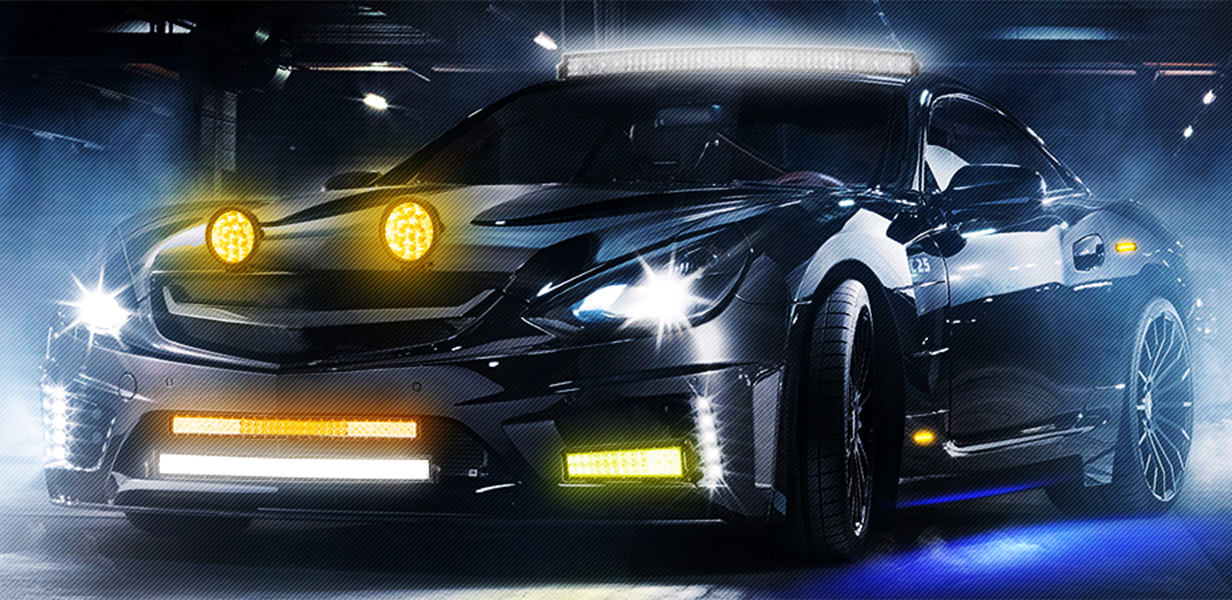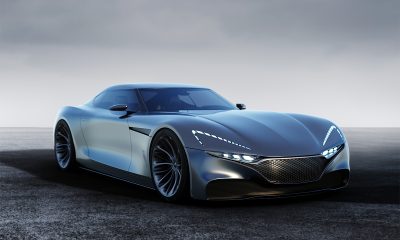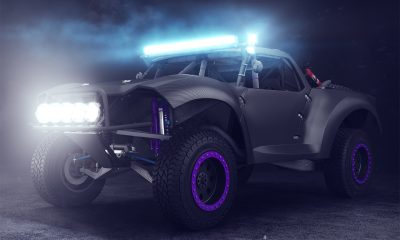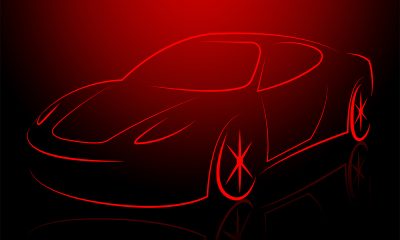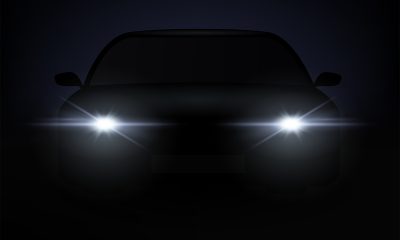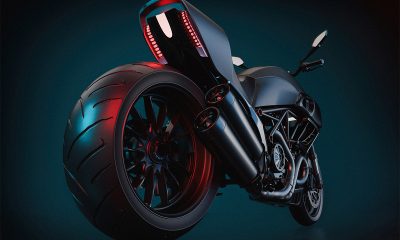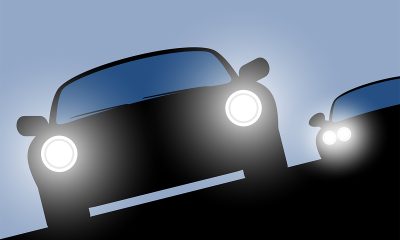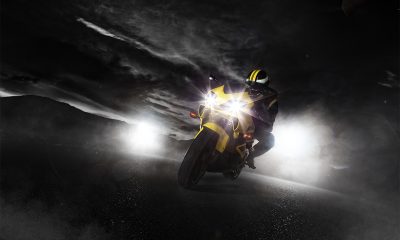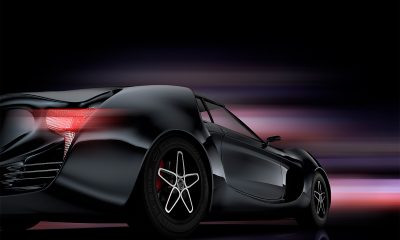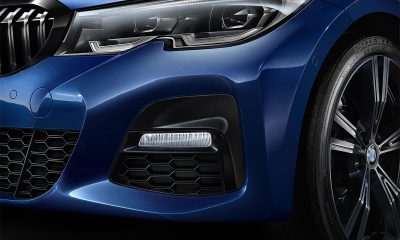What are driving lights
Driving lights are forward lighting devices designed to supplement the high beam of a standard headlight system. They illuminate the road over a long distance and/or a wide area to improve visibility of the road ahead. By providing illumination over areas that are beyond the reach of high beam headlights, high beam auxiliary lights could thus offer an enhanced level of safety never achieved with the standard headlight system alone. The extended range of illumination makes it easy for vehicle drivers to identify hazards long before they would be seen with high beams only and execute evasive action in a sufficient time.
The ability to provide illumination forward of the vehicle that enhance the visibility of distant and surrounding objects makes driving lights especially useful at higher cruising speeds or in an off-road environment. Driving lights are installed on the front of the vehicle at a mounting height of not less than 12 inches nor more than 42 inches above the road surface to provide extra high beam illumination. They are typically mounted above the vehicle’s front bumper or in its grill. Aside from just being used at night to illuminate an area further and wider than the headlights are capable of, driving lights may also work as daytime running lights to improve the forward conspicuity of a vehicle to other road users in the daytime.
Take advantage of solid-state lighting (SSL)
Driving lights are dedicated auxiliary lights that are designed as self-contained lighting systems in a round, cube, rectangular, or linear form. Traditional high beam auxiliary lights produce directional beams of light using omnidirectional light sources such as halogen and HID (xenon) bulbs. These light sources are energy hungry devices that can cause the vehicle electrical to struggle under a heavy load. The glass bulbs are fragile when exposed to repeated mechanical shocks or vibrations. The xenon short-arc lamps are capable of producing an intense beam of cool white light for effective long-range illumination. However, the pressurized gas contained within the bulb is a risk factor. Xenon lamps have a very short lifespan (500 to 1,500 hours). An alternative farfield lighting technology to xenon-based HID lighting is solid-state lighting (SSL) based on laser diodes.
A laser diode operates on the similar principle as that of a phosphor-converted LED, but the carrier recombination that creates photons is dominated by stimulated emission, rather than spontaneous emission which dominates the carrier recombination in LEDs. Laser diodes deliver the highest luminance available of any light source and their light output can be easily shaped. This enables collimated beams and longer throw for directional lighting applications. Nevertheless, laser diode lighting is still fairly novel and the price of laser diode forward lighting systems can be impractically high for the consumer market. Therefore directional lighting for automotive applications is currently the realm of LED lighting.
Design and construction
LED technology opens up completely new horizons in the design and performance of high beam auxiliary lights. LEDs are the most successful representative of SSL and has gained wide acceptance in automotive lighting. Their intrinsic characteristics, including high energy efficiency, small size, solid state durability, optical directionality, long service life, superior intensity controllability, and the capability of precise control of the spectral power distribution (SPD), lend them perfectly to vehicle forward lighting. LED driving lights come in a variety of lumen packages, beam characteristics, color options, and form factors. The high intensity light is produced typically by high power LEDs that are ceramic-based or are packaged using the CSP technology. Both ceramic-based and CSP LEDs offer high drive current capability that allows them to produce high lumen output from small optical sources. The optical distributions of the LEDs can be precisely controlled using reflectors, lenses, or a combination of them.
LED driving lights are available in pencil (spot) beams and spread (flood) beams. The pencil beam is designed for long-throw illumination which is often required by off-road vehicles which should give drivers sufficient perception-reaction time by providing improved visibility of objects or obstacles at great distances. The spread beam is intended to illuminate both the area immediately in front of the vehicle and some distance ahead for operators of road vehicles (e.g., cars, trucks and buses) who desire fatigue-free driving more than recognizing objects at a far distance. LEDs afford an opportunity to efficiently extract light directly from the source and precisely controlled the light for the desired distributions. The use of total internal reflection (TIR) optics, in particular, allows to create very tight spot beams with FWHM divergence as small as 3 degrees.
System reliability and durability
LED driving lights offer a number of decisive advantages over conventional lamp-based driving lights, but the unique operating characteristics of LEDs pose challenges to system integration. LEDs perform to their full capacity only when the junction temperature, drive current, and environmental conditions are properly controlled. The housing of an LED driving light is generally constructed from die cast aluminum which provides ruggedness to withstand harsh off-road conditions and high thermal conductivity required for efficient heat dissipation. Cooling fins are often cast into the rear of the housing to increase the surface area of the heat sink for maximized heat dissipation by convection. The LED module is an array of high power LED packages soldered on a metal core printed circuit board (MCPCB). It is attached to the heat sink in full interfacial contact for a low thermal impedance. A thermal interface material (TIM) is placed between the MCPCB and heat sink to minimize the interfacial contact resistance.
Solder joint reliability is of critical importance to the entire lighting system because vehicles traveling at a high rate of speed or on off-road terrains also cause repeated, high amplitude vibration. The creep resistance of the solder is also an influential factor in minimizing failures in solder joints as a consequence of strains incurred in thermal cycling that commonly occurs in outdoor environments. The LED module is protected by a polycarbonate lens which is impact resistant and UV stabilized.
All points of entry and material transition of the luminaire assembly are hermetically sealed to resist the ingress of moisture, dust, contaminants and insects. Some products are equipped with a pressure equalizing vent which is used to eliminate pressure build-up (expansion) and vacuums (collapsing) caused by rapid heating and cooling cycles.
Driver circuit
LEDs are current driven devices. A driver circuit is needed to regulate the power to the LEDs. The LED driver is often required to accommodate a wide input voltage range such as 9-36 VDC due to the presence of voltage fluctuations in vehicle electrical systems. An LED driver responds to the changing drive current needs of the LEDs due to variations in forward voltage across the semiconductor junction of the LEDs.
High reliability in automotive applications calls for the use of protection circuitry against overvoltage, undervoltage, reverse polarity, overcurrent, and other faults conditions. A switching regulator is essential if the supply voltage has a wide variation and high circuit efficiency is important. However, the tight EMI specifications impose special considerations in the design of LED power supplies for vehicle lighting applications. A simple linear regulator could be used to meet the electromagnetic compatibility (EMC) requirements, provided that the supply voltage is always higher than the LED forward voltage.

